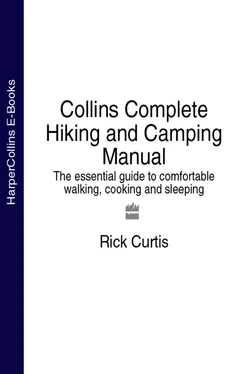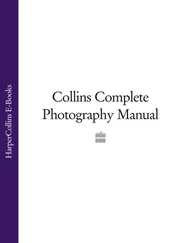1 ...7 8 9 11 12 13 ...25 Waterproof Shell These are fabrics that use some type of impermeable waterproof coating (i.e., coated nylon). These will keep you dry from rain but allow water vapor from perspiration to build up in layers underneath. Pro: Very waterproof. Windproof. Inexpensive. Con: Allows for significant body moisture buildup.
Waterproof and Breathable Shell There are a number of ways to make a waterproof and breathable outer shell. All rely on the principle that water droplets from rain are more than 20,000 times larger than water vapor. With a fabric that has a layer with very tiny pores, water vapor can pass through from the inside to the outside while the outside remains impenetrable to water droplets. With all of these fabrics there is always a trade-off between the degree of waterproofness of the fabric and its breathability. Some fabrics use a microporous membrane that is laminated to the fabric (Gore-Tex, Sympatex); others have a microporous coating on the fabric (Ultrex, Triple Point Ceramic, Entrant). Pro: Degrees of waterproofness. Degrees of breathability. Windproof. Con: Degrees of waterproofness. Degrees of breathability. Some body moisture buildup. Expensive.
All hard shells require some form of seam sealing. While the fabric itself may be waterproof, any place where there is stitching means a hole going through the fabric that can let water in. There are a number of approaches to seam sealing including glue, heat sealing, and seam tape.

TRICKS OF THE TRAIL
Bringing Your Rain Gear Back to LifeAfter frequent use, all waterproof and breathable fabrics start to lose their edge. You can revitalize them by washing with a mild nondetergent soap, machine drying, and then lightly ironing the outer fabric on a medium temperature setting. The washing helps restore the membrane or coating’s effectiveness, and the heat of the iron helps bring back the ability to resist water.
Many fabrics (waterproof and waterproof/breathable) have a DWR (durable water repellant) chemical coating on the outside of the fabric. This is what makes water bead up on the surface of your jacket. It’s like your car after a new coat of wax. Over time these coatings wear off, allowing water to seep into the fabric. The garment may still be waterproof, just soaked on the outside and heavier. You can revitalize your DWR finish with spray-on products or by machine-washing it back in with a liquid treatment.
The Head Layer
This is for sun and rain protection, and to reduce heat loss. Up to 70 percent of the body’s heat can be lost through radiation and convection at the head in cold weather. Wearing a hat (preferably wool or synthetic) will conserve heat, allowing the body to send more blood to cold peripheral areas (hands, toes, feet). Other items like wide-brimmed hats can help in a downpour, keep sun off your face, and provide shade to help prevent overheating.
The Hand Layer(s)
These insulate your hands in cold conditions. Gloves and mittens come in all shapes and sizes with lots of different fabrics for insulation. They should fit snugly, not tightly. Gloves provide greater flexibility for your hands, but they are colder than mittens since they have greater surface area at the fingers for radiating heat. A combination of thin synthetic glove liners and fleece or wool mittens is excellent for cold weather. Also good are mitten shells, which add a windproof/waterproof layer. Fingerless gloves or flip-top mittens are great for cooking or other activities that require dexterity.
The Feet Layers
These serve as insulation and cushioning on your feet and help prevent blisters. You should wear a lightweight, synthetic liner sock, which helps pass moisture away from your foot. It’s helpful to use a liner sock that has wicking properties. On top of the liner, wear a medium to heavy wool, wool-nylon blend, or synthetic hiking sock. Having two sock layers means that your socks will slide against each other, so the friction from your boots is absorbed by the sock layers rather than rubbing your skin (friction against the skin leads to blisters; see page). The outer sock provides cushioning and passes the moisture from your foot outward, keeping your foot dryer. If your feet stay damp, they get wrinkled and are more prone to blisters. Don’t wear cotton socks. The cotton absorbs and retains the sweat from your feet, keeping your feet wet throughout the day and increasing the potential for blisters or trenchfoot (see page). Before putting your boots on, smooth the socks of all wrinkles to prevent blisters. You should always carry extra socks, with a recommended rotation of one set to wear, one to dry, and one always dry. I typically take three pairs of liners and two pair of wool/synthetics on multiday trips.
CLOTHING TECHNIQUES
When you first get up in the morning, your activity level will be low, as will the air temperature. You will need to have many, if not all, of your layers on until you become active.
As your activity level increases, you will need to shed some layers, since you will start generating heat. A good rule of thumb is, just before you get ready to hike, strip down until you feel just cool, not chilled. Then start hiking. If you begin with too many layers on, you will only start overheating and sweating and you’ll have to stop 10 minutes down the trail to take layers off. Opening or closing a zipper, rolling sleeves up or down, taking a hat off or putting one on all help with temperature regulation.
If you stop for more than a few minutes, you may need to add a layer to keep from getting chilled, so keep an extra layer close at hand.
Different parts of your body may require different layering combinations. In winter conditions I need a lot of layers on my trunk to stay properly regulated, but my arms and legs don’t need as many layers. Vests provide insulation where you need it most, around the torso, and weigh less than a full jacket.
If your clothing gets wet—not just damp—take it off and change into something dry. You won’t be able to warm up if you are in soaking wet clothing. Remember, wetness can lead to hypothermia. (See “ Hypothermia,”.)
At the end of the day, as activity decreases and temperature drops, you’ll need to add layers. Once you start to cool down, it takes a lot of the body’s resources (calories) to heat up again, so layer up immediately, before you get chilled. If your base layer is totally soaked, change into something dry before layering up. It may be good to put on more than you think you need; it will only get colder. If you are too warm, you can open up the layers and ventilate to reach the proper temperature.
TRICKS OF THE TRAIL
CottonWhat’s the worst thing to bring on a backpacking trip? Blue jeans. In temperate climates and environments, you should minimize your use of cotton clothing. Although cotton is comfortable to wear, cotton fibers absorb and retain water (hydrophilic). Once wet, cotton loses heat 25 times faster than dry clothing. Wet cotton clothing can be a significant factor in hypothermia (see “ Hypothermia,”). Never wear cotton in cold conditions as a form of insulation. In warm weather, some cotton-synthetic blends can be used, since they dry more quickly than 100 percent cotton and do not absorb as much water. Pro: Comfortable when dry. Con: Absorbs water, causing increased heat loss. Loses all insulating value when wet. Difficult to dry.
 GOING ULTRALIGHT – CLOTHING
GOING ULTRALIGHT – CLOTHING
Ultralight clothing is ultimately about understanding the environment and knowing yourself. In order to get the most out of an ultralight approach to clothing, you have to understand how your body works in particular temperatures and customize what you bring. I used to think about how cold it might get at night and then toss in a heavy fleece jacket as an extra layer when, in fact, a lightweight fleece vest underneath my rain jacket keeps me just as warm. Ultralight hikers develop a whole interconnected system where the layers complement one another in different combinations. Doing this can save you lots of weight without needing to buy specialized “ultralight versions” of everything. Experienced ultralight hikers know their bodies in different weather conditions and know just how to layer and delayer throughout the changing conditions of the day to keep warm, cool off, stay dry, etc. Some hikers have literally spent years refining their clothing system by fabric type, thickness, and number of layers to get it down to the least possible weight. Most people don’t have the time to spend years working all this out, so look for what the experts have to say. There is a rich set of Web sites devoted to ultralight gear and lots of people who test and review things (see the Bibliography).
Читать дальше


 GOING ULTRALIGHT – CLOTHING
GOING ULTRALIGHT – CLOTHING










